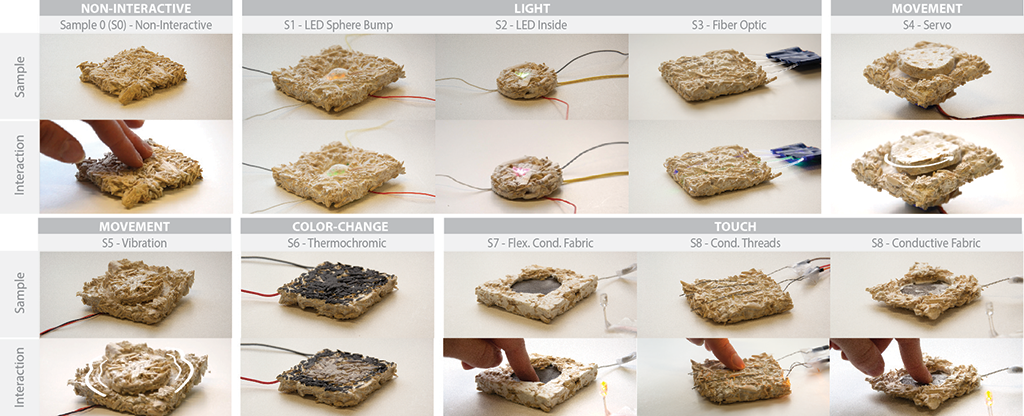Project Description
Interactive Mycelium Composites: Material Exploration on Combining Mushroom with Off-the-shelf Electronic Components
Çağlar Genç, Emilia Launne and Jonna Häkkilä
Nordic Human-Computer Interaction Conference (NordiCHI ’22), October 8–12, 2022, Aarhus, Denmark
Using organic materials for interactive products has gained attention during the past few years. Among them, mycelium, the vegetative part of the mushroom, is a promising material and explored by only distinct examples in HCI. This paper adopts a systematic approach to combining mycelium with LEDs, optical fibers, servo motors, micro-vibration motors, thermochromic inks, conductive threads and fabrics. We created 10 material samples utilizing input (touch) and/or output (light, movement and color-change) features. We describe our material exploration process, as well as the results of an online survey (N=30) and two design workshops (N=10) which examined the experiences evoked by different interactive elements and collected potential use-cases. Our work contributes insights about the technology inclusion to the natural feel of the mycelium, the material’s suitability for tangible interaction and suggests future applications for the composites as a sustainable alternative for interactive interior design elements and ambient displays.
Genc, C., Launne, E., & Häkkilä, J. (2022, in-press). Interactive Mycelium Composites: Material Exploration on Combining Mushroom with Off-the-shelf Electronic Components. In Nordic Human-Computer Interaction Conference (NordiCHI ’22), October 8–12, 2022, Aarhus, Denmark. ACM, New York, NY, USA 12 Pages.

Mycelium samples and interactions organized in categories

An overview of the growing process: (a) Mycelium bag at the end of the first growing phase; (b) crumbled mycelium; (c) the mold of Sample 2 with the component; (d) mycelium medium and component in the mold; (e) grown sample.

